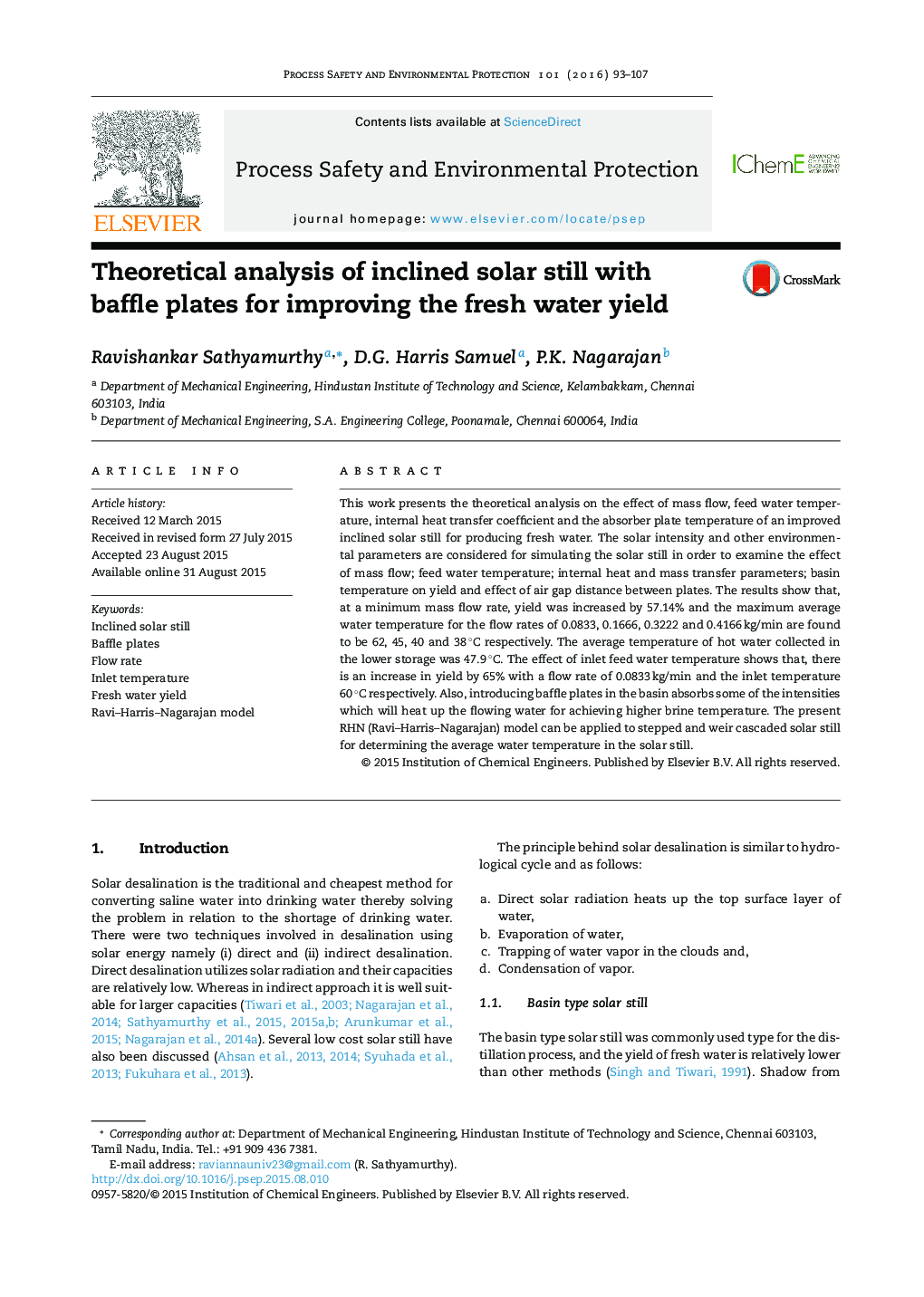| Article ID | Journal | Published Year | Pages | File Type |
|---|---|---|---|---|
| 588147 | Process Safety and Environmental Protection | 2016 | 15 Pages |
•A new model using baffles is proposed for improving the yield of fresh water with reduced area.•The present RHN model can be applied to stepped and weir cascade solar still.•Characteristic equation for yield on effect of mass flow, internal heat transfer and basin temperature is determined.
This work presents the theoretical analysis on the effect of mass flow, feed water temperature, internal heat transfer coefficient and the absorber plate temperature of an improved inclined solar still for producing fresh water. The solar intensity and other environmental parameters are considered for simulating the solar still in order to examine the effect of mass flow; feed water temperature; internal heat and mass transfer parameters; basin temperature on yield and effect of air gap distance between plates. The results show that, at a minimum mass flow rate, yield was increased by 57.14% and the maximum average water temperature for the flow rates of 0.0833, 0.1666, 0.3222 and 0.4166 kg/min are found to be 62, 45, 40 and 38 °C respectively. The average temperature of hot water collected in the lower storage was 47.9 °C. The effect of inlet feed water temperature shows that, there is an increase in yield by 65% with a flow rate of 0.0833 kg/min and the inlet temperature 60 °C respectively. Also, introducing baffle plates in the basin absorbs some of the intensities which will heat up the flowing water for achieving higher brine temperature. The present RHN (Ravi–Harris–Nagarajan) model can be applied to stepped and weir cascaded solar still for determining the average water temperature in the solar still.
